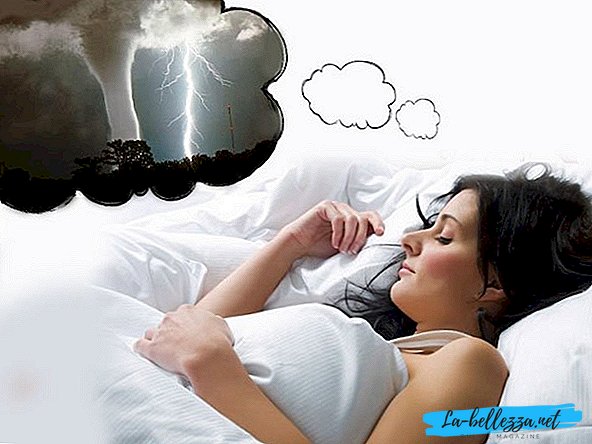
Whiskey and eyes can be ill for various reasons.
The nature of such pain is also the most diverse.
Let us consider in more detail what provokes pain with such a localization, what diseases can contribute to this and how to get rid of pain in the temples and eyes.
The temple and eyes hurt - the reasons
Whiskey and eyes can be ill for the following main reasons:
1. Cerebrovascular accident. This is one of the most common reasons because of which a person's temples and eyes begin to hurt. Spasms in the vessels provoke a disturbance in the nutrition of the brain, which causes severe pain in the head.
Such factors provoke a violation of blood circulation:
• smoking;
• hypertension;
• stroke;
• weather dependence;
• concomitant serious illnesses (diabetes mellitus, heart disease, etc.);
• stresses.
2. High blood pressure - This is the second most frequent reason why the temples and eyes begin to hurt. Most of all, people with an age of thirty-five years are exposed to this condition.
For hypertension (arterial hypertension), headache, a feeling of pulsation in the temples, nausea, pallor of the skin and dizziness are inherent. If this condition is not treated, then high-pressure attacks can be accompanied by loss of consciousness and a sharp violation of cerebral circulation, which increases the risk of developing a stroke.
The causes of high blood pressure can be:
• excess weight;
• stress;
• hormonal imbalance;
• malnutrition.
3. Colds (SARS, influenza). Usually a headache in this condition disturbs the person at the very beginning of the disease.
4. Migraine is a vascular disease, the main cause of which has not yet been established. Its attacks are characterized by a throbbing pain in the temple, which is usually localized on one side of the head. In addition, sometimes migraine is accompanied by pain in the eyes, photophobia and nausea.
5. Poisoning may cause the temple and eyes to hurt. Today you can poison yourself not only by inhaling chemical vapors, but also by using foods that are generously seasoned with all kinds of preservatives, dyes and additives. In addition, severe poisoning of the body can cause a normal spoiled product.
In addition to pain in the temples, a sign of poisoning is nausea, vomiting, abdominal pain and severe weakness.
6. Arteritis. It can cause pain in the head, which lasts for 3-4 hours. In more advanced cases, this disease can provoke visual impairment.
7. Stress cephalgia. Usually this disease occurs in adults. It is caused by a strong nervous strain. With tensile cephaglia, a person suffers from pain in the temples that occur when the head is turned. Sometimes symptoms are accompanied by nausea and vomiting.
8. Abscess - This is a very strong infectious process, which is accompanied by the accumulation of pus in the outer and inner parts of the alveolar zone. This disease is extremely dangerous. It is characterized by the following symptoms:
• loss of appetite;
• weakness;
• heat.
9. Neuralgia can cause temples and eyes to hurt. In this case, the nature of the pain is sharp, shooting. Unpleasant sensations are paroxysmal and short-lived. They can also be repeated for several days in a row.
10. Adenoiditis is a disease in which the tonsils are very inflamed. This condition can provoke dull pain in the temples, weakness and dizziness. It requires medical treatment, especially in young children, since adenoiditis develops much faster and lasts longer.
In addition to the above diseases, the temple and eyes can hurt for such additional reasons:
1. Anemia is a condition in which a person decreases the amount of hemoglobin and red blood cells in the blood. Symptoms of anemia are pallor, shortness of breath, and loss of appetite.
2. Infectious diseases (tonsillitis, sinusitis, tonsillitis, etc.) can cause the temple and eyes to hurt.
3. Pain of psychogenic origin, arising from stress. Usually the nature of such pain is aching. Whiskey can hurt for hours, preventing a person from concentrating.
4. Pain in women during menstruation, as well as menopause. The reason for this is a hormonal failure in the body.
5. Cluster pain (of unknown origin).
6. Strong emotional or physical overwork.
7. Diseases of the musculoskeletal system (osteochondrosis, arthritis, arthrosis, etc.) can cause pain in the temples. The explanation is simple: with such diseases, blood vessels are very often squeezed, which leads to pain in the eyes and temples.
8. Ophthalmic diseases can cause sharp pains in the eyes and temples. It is important to know that it is necessary to treat such diseases, otherwise, in an advanced state, some of them can lead to problems with vision and blindness.
9. The development of intracranial hematoma can occur after a head injury or concussion. In this case, the person will be very weak, he may experience eye pain, nausea and dizziness. This condition requires immediate diagnosis and surgical or medical treatment.
10. Very often, pain in the eyes and temples is a harbinger of a developing stroke. For this reason, if such symptoms occur, you should immediately consult a doctor.
11. Meningitis. It can be accompanied by constant pain in the temples, which also extends to the eyes, ears and neck.
12. The development of oncological pathology of the brain can cause the temple and eyes to hurt. In this case, the nature of the pain will be pulsating and aching. Such symptoms can develop for a rather long time, during which a person will feel deterioration in the condition. In addition, additional signs of a brain tumor are:
• visual impairment;
• apathy;
• dizziness;
• nausea;
• weakness;
• cramps;
• epileptic seizures.
Whiskey and eyes hurt - diagnosis
If you experience pains in the eyes and temples that last longer than three days in a row, you should contact a therapist. After the examination, the doctor will prescribe such mandatory diagnostic procedures:
1. General clinical blood test.
2. Advanced biochemical blood test.
3. CT scan of the brain.
4. MTR of the brain.
5. Radiography of the sinuses.
Temple and eye hurts - what to do: ambulance, treatment
If there is a sharp pain in the temples and eyes, it is necessary to provide first aid:
1. Create comfortable conditions for the patient (lay him, open the window for air intake).
2. Apply a cold compress to your head.
3. Make a light massage of the temples (you can use peppermint essential oil for this).
4. Count the pulse. If it is more frequent, then you can give a person a mild sedative.
5. Give the patient an analgesic drug (with severe pain). Paracetamol or ibuprofen is best used.
Treatment of pain in the temples and eyes is prescribed based on the diagnosed disease, symptoms and general condition of the patient.
Symptomatic therapy involves the intake of such groups of drugs:
1. Antipyretic drugs (Paracetamol) are prescribed at high temperature.
2. Optioid analgesics (Tramadol, Nalbufin) are prescribed for severe headaches.
3. Medicines from the group of triptans (Sumatriptan, Eletriptan) - used for migraine attacks.
4. Antidepressants (Amitriptyline, Nortriptyline) relieve feelings of depression and depression. They are prescribed for pain caused by stress.
Additional therapy is prescribed for the detection of more serious diseases.
The temple and eye hurts: folk remedies
The most effective folk remedies against pain in the temples and eyes are:
1. Aromatherapy. Inhalation of the essential oils of lemon, peppermint or orange is best suited for this.
2. Flask of Hawthorn (2 tbsp. Hawthorn per glass of hot water). It should be drunk 1 tablespoon per day.
3. Remedy from valerian:
• pour 250 ml of boiling water to 30 g of valerian root;
• boil for twenty minutes;
• strain and take three times a day for 1 spoon.
4. Potato Remedy:
• grate 1 kg of raw potatoes on a grater;
• add 50 ml of milk to the finished mixture;
• wait half an hour;
• wring out the mixture;
• put the prepared gruel on the head and put on a plastic cap on top;
• be so half an hour;
• repeat the procedure daily for a week.











